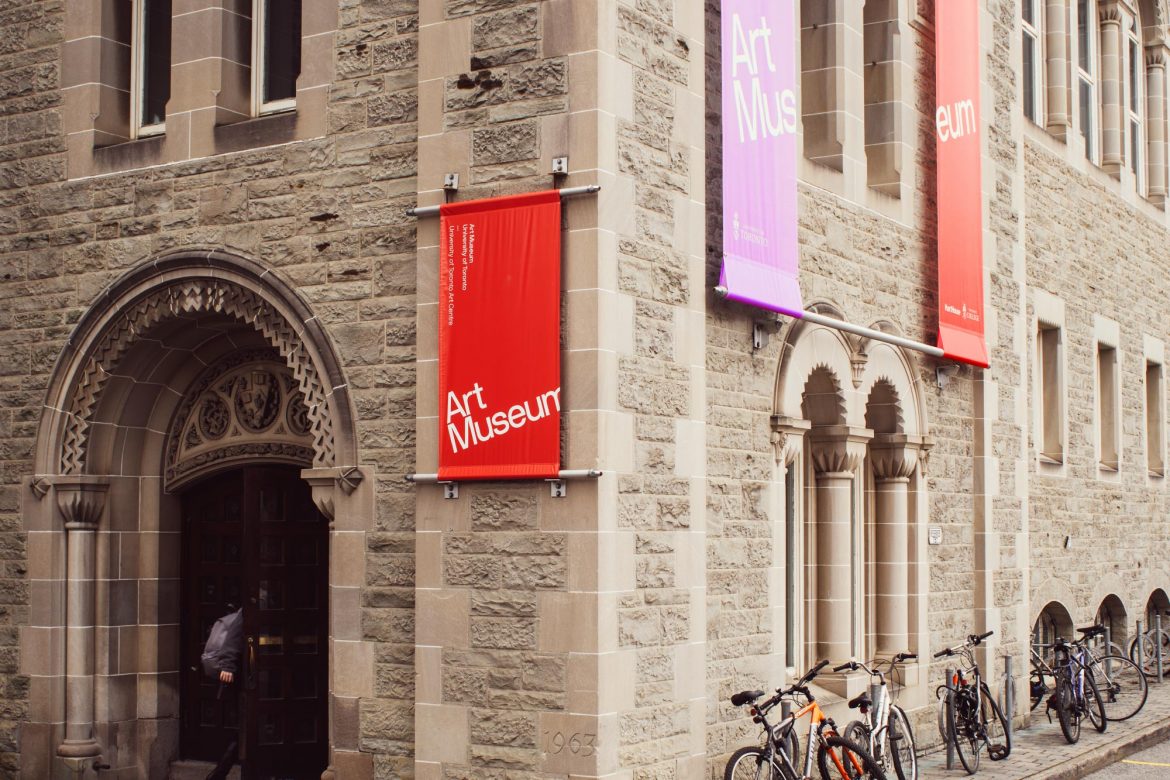Photo Credit: Underline Studios
Hart House’s “Talking Walls” Exhibition
Aramayah Ocol, Contributor
The second floor Talking Walls Exhibition of Hart House houses Brian Dickie’s portraits of civilians who travelled to Myanmar’s border regions to join the People’s Defense Force after the Junta overthrew the democratically elected National League for Democracy in February 2021. The repeated portrait structure of civilians situated in the makeshift conditions of the People’s Defense Force military training camps, hidden in the jungle depicted within the frame of each photograph, allows for dialogue of individuals with their environment. Dickie’s photos are not “candids.” Rather, the subject of each photo deliberately participates with the camera to merge ideological realities with their individuality. Their gaze penetrates through the camera’s lens as if looking into the viewer’s eyes.
While many of the camera’s subjects are dressed in khaki and armed with rifles, the camera genuinely searches for personal motive. Dickie names the image of the individual sitting with a pen in hand beside piling books Ser Mon Way, concealing the subject’s actual name for security reasons. Dreaming for “total civilian control” at the backlash of the people against the Junta, “he hoped. . . his people would be awoken to the dystopian nightmare.”
However, what is the cost of realizing the dystopian nightmare following the Junta coup? The man Dickie names Yar Zar sits slightly hunched amid scattered medical supplies. A mask covering the bottom half of Yar Zar’s face, the eye reflects on the blank expression of his gaze that carries deep loss. Having dreamed of a family, Yar Zar divorced his wife to fight for the dream of Myanmar’s democracy. “Now he cries when talking about the wife he divorced to come to the jungle and fight.”
The subjects of Brian Dickie’s camera, who risked their safety by joining the People’s Defense Force, cannot obtain their personal ambitions and dreams without sacrificing themselves for the national interest. Their defiant gazes into the soul of the camera expresses a profound cognizance of the loss of family, individuality, and personal ambition. However, while Brian Dickie captures loss, he also seizes the spirit of defiance and the dream of democracy through struggle.
The collection of individual gazes that build the entirety of Brian Dickie’s collection at Hart House puts into focus the connection between how the aspirations of the individual can become the building blocks of national hope. In Myanmar, the movement of armed resistance is not fuelled by ideology, but rather out of practicality and necessity to facilitate the inherent right to family, freedom, and democracy.



